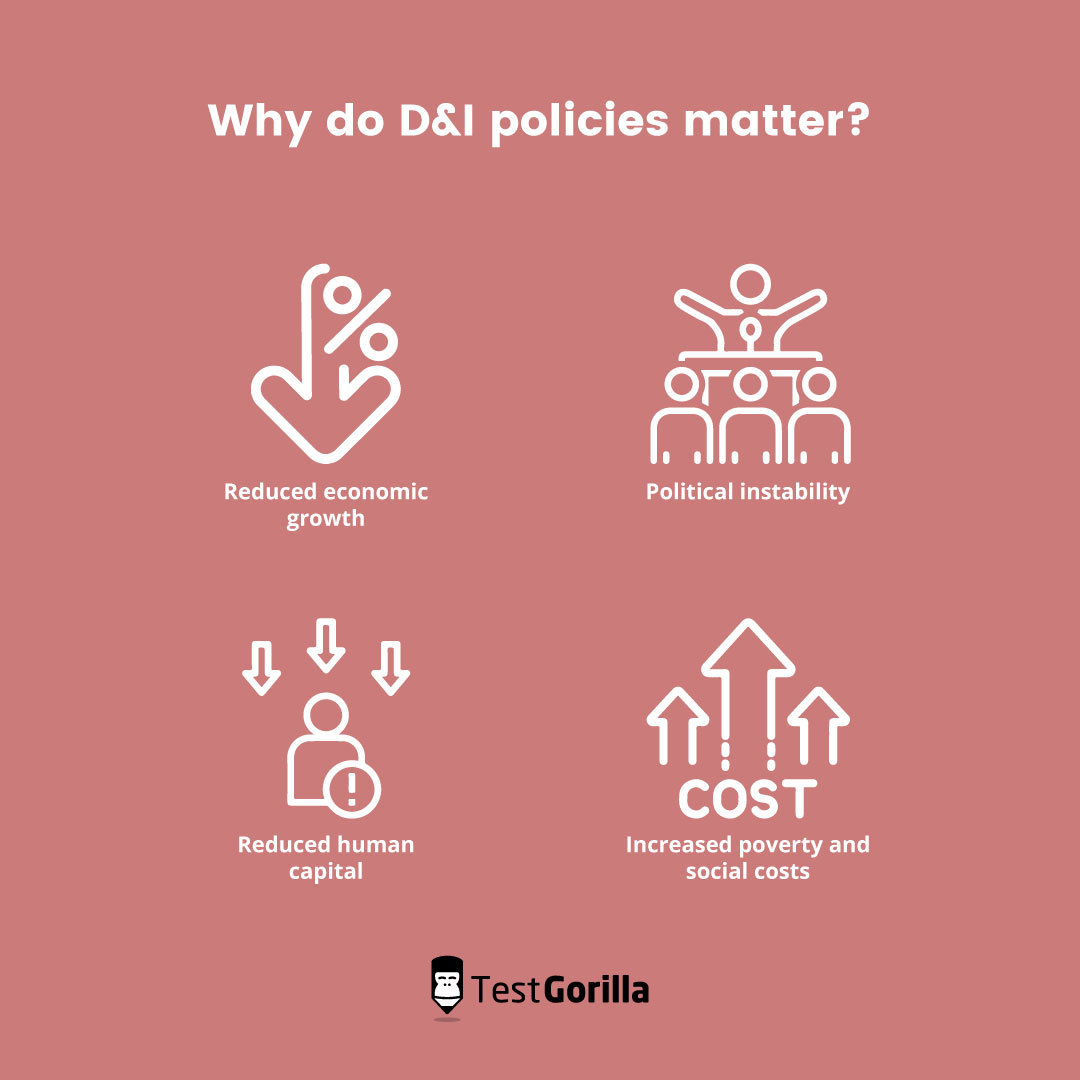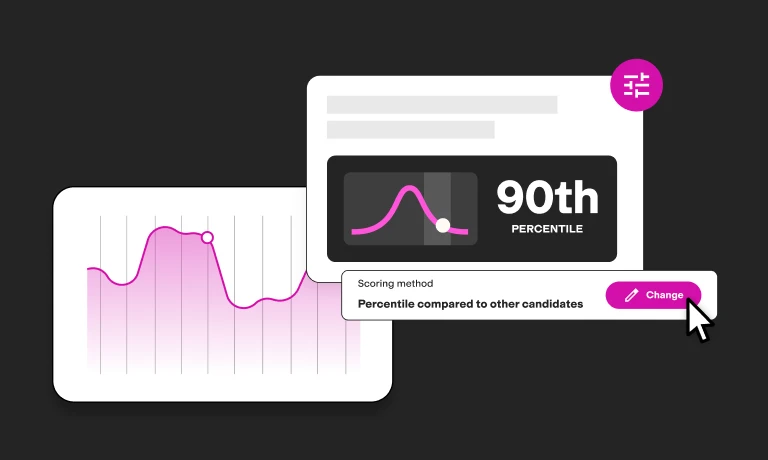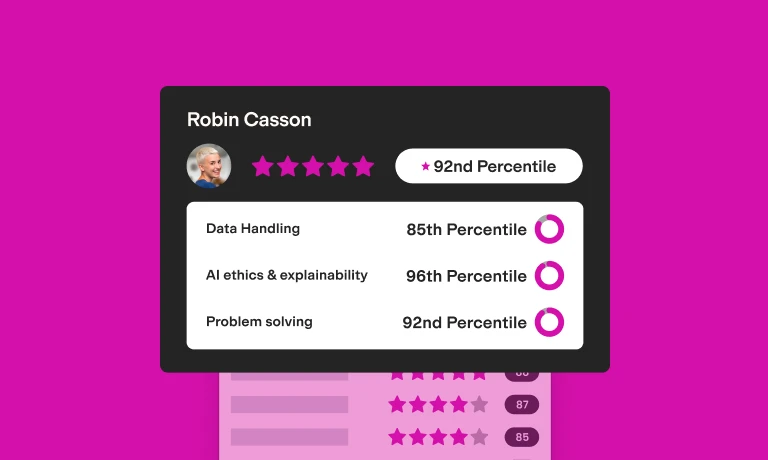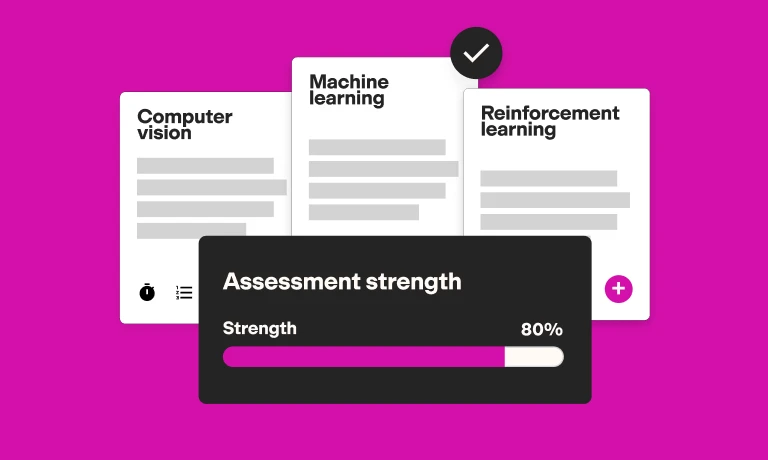Equality policies from across the globe: Are some more equal than others?
It wasn’t too long ago that the women’s suffrage and civil rights movements fought for equal rights in society and at work.
Now plenty of countries are embedding diversity and inclusion (D&I) efforts into their policies and reaping the benefits of an empowered and diverse workforce.
But when it comes to leveling the playing field for people of all backgrounds across OECD (Organisation for Economic Co-operation and Development) countries — like the United States, Australia, Japan, Sweden, and South Korea — are all D&I policies the same?
In this piece, we’ll look at how D&I policies compare in different OECD countries, what metrics they use, and how these policies work in practice. We’ll also tell you which countries have the best overall track records on D&I.
Why do D&I policies matter?
Without D&I policies that aim to create a more equitable workplace, countries and organizations risk making discrimination even worse – while limiting their access to diverse talent, ideas, and perspectives.
The consequences of not having D&I policies include:
Reduced economic growth: Discrimination limits the ability of individuals and communities to access education, healthcare, and other resources necessary for economic development. When large segments of the population are excluded from economic opportunities, it can lead to lower productivity and a less efficient allocation of resources.
Political instability: Inequality can lead to political instability, as marginalized groups feel disenfranchised and excluded from the political process. This can lead to social unrest, protests, and even conflict, all of which can have significant economic costs.
Reduced human capital: When large segments of the population are excluded from education and other opportunities, it can lead to a loss of human capital in terms of the economic value of a worker’s education, experience, and skills. This can limit the ability of a country to innovate and compete in the global economy.
Increased poverty and social costs: Inequality can lead to increased poverty, which in turn can lead to higher social costs, such as increased spending on social welfare programs, healthcare, and education.
In addition, since globalization has led to a more diverse and interconnected workforce, there’s a growing awareness of the benefits of diversity, including improved innovation, creativity, and problem-solving. All of which means governments, investors, and consumers need to demonstrate their commitment to D&I to keep up in a globalized world.
For example, according to the European Institute for Gender Equality (EIGE), full gender equality could increase GDP in the EU by between 6.1% and 9.6% by 2050 and increase employment rates by 10.5 million workers.
How equality policies vary around the world
Equality policies are crucial for promoting fairness and reducing discrimination in all aspects of society, from education and employment to healthcare and politics. However, these policies vary around the world – reflecting each country’s political ideals and cultural norms – and might not always protect everyone.
Although some governments have implemented comprehensive equality policies that address different forms of discrimination, others have more limited policies that focus on specific groups, for example, protecting women’s but not LGBTQ+ rights.
By understanding their similarities or differences we can get valuable insight into the challenges and opportunities for promoting equality and inclusion in different contexts.
US
Just decades after the abolition of segregation, the US had its first Black president. Yet, terrible cases of police brutality against people of color in the US still send shockwaves around the world.
In an effort to combat entrenched problems of discrimination, the US has a range of federal and state-level policies aimed at promoting diversity and inclusion, including:
Affirmative Action: Requires employers to take positive steps to ensure that all individuals, including women and minorities, have an equal opportunity to secure employment.
Diversity training: Many companies in the United States offer diversity training to their employees to increase awareness and sensitivity to different cultures and identities. The White House also signed an executive order to make D&I hiring a priority in public sector roles.
Anti-discrimination laws: For example, Title VII of the Civil Rights Act prohibits employment discrimination based on race, color, religion, gender, or national origin. The Americans with Disabilities Act (ADA) prohibits discrimination against individuals with disabilities in employment, housing, public accommodations, transportation, and telecommunications.
Equal pay: The United States has several laws in place that require employers to provide equal pay to men and women who perform the same work.
Family and Medical Leave Act (FMLA): This law allows eligible employees to take up to 12 weeks of unpaid leave per year for certain family and medical reasons.
Employee Resource Groups (ERGs): These support and provide a community for employees who share common interests or characteristics, such as race, gender, sexual orientation, or disabilities.
Supplier diversity: Many companies have supplier diversity programs to promote the use of minority-owned, women-owned, and veteran-owned businesses in their supply chain.
There are also government-funded initiatives to promote diversity and inclusion in education, employment, and business, such as the Minority Business Development Agency, which promotes growth and competitiveness among US minority-owned businesses, and the HBCU Capital Financing Program, which provides low-cost financing to repair and renovate historically Black colleges and universities in the US.
Despite programs and laws in place to protect different groups, like the Equal Pay Act of 1963 designed to create equal pay between the sexes, the reality is that women still get paid 77 cents to every male dollar. This is a staggering pay gap, and it impacts women of color more than their White counterparts.
Australia
Australia is one of the most diverse nations — where people identify with more than 270 ancestries. But it’s still very common for people in Australia to experience prejudice and racism when applying for jobs or living their everyday lives.
This is despite the many policies in place to help reduce workplace discrimination and provide equal opportunity for underserved groups. For example:
Anti-discrimination acts: The Workplace Gender Equality Act requires non-public sector organizations to report annually on gender equality. The Racial Discrimination Act also prohibits discrimination on the basis of race, color, nationality, or ethnic origin, and requires employers to provide a workplace free from racial discrimination. In addition, the Disability Discrimination Act prohibits discrimination on the basis of disability, and requires employers to accommodate employees with disabilities.
Multiculturalism: The Australian government has a longstanding commitment to multiculturalism and has established various initiatives to support cultural diversity in the workplace, including the Diversity Council Australia and the Australian Human Rights Commission.
LGBTQ+ inclusion: Australia has passed various laws that protect LGBTQ+ individuals from discrimination in the workplace, including the Sex Discrimination Act and the Fair Work Act. In addition, several organizations have established LGBTQ+ inclusion policies and initiatives, such as the Pride in Diversity program.
Indigenous Employment Programs: The Australian government has established several programs aimed at improving employment outcomes for Aboriginal and Torres Strait Islander people, including the Indigenous Australian Government Development Programme and the Indigenous Apprenticeship Programme.
According to a report by the Australian Bureau of Statistics, the Indigenous unemployment rate was 16.3% compared to 5.1% for non-Indigenous Australians. So the country has a long way to go to address the underlying issues behind this gap, such as lack of education and training opportunities.
Japan
Japan has the worst gender wage gap of the G7 countries, coming in at 22.1%. For comparison, the average OECD wage gap is 11.7%.
But the Japanese government and businesses have started taking steps in the right direction.
Here’s how:
Promoting women’s participation in the workforce: Many Japanese companies are implementing policies such as flexible work arrangements, child-care support, and leadership development programs to encourage more women to stay in the workforce.
Increasing the number of foreign workers: Japan has traditionally been a homogenous society — making it difficult for foreigners to assimilate. However, with an aging population and a shrinking workforce, the Japanese government has introduced a new visa program to attract more foreign workers. The program aims to attract highly skilled professionals and recent graduates.
Addressing discrimination against the LGBTQ+ community: While homosexuality is legal in Japan, there are no specific laws that protect LGBTQ+ people from discrimination. However, some companies have implemented policies such as same-sex partner benefits and anti-discrimination policies to promote inclusion and diversity.
Promoting employment of people with disabilities: The Japanese government has set a goal of having people with disabilities make up 2.5% of the workforce in companies with more than 50 employees. To support this goal, the government provides subsidies to companies that employ people with disabilities and offers various training programs.
It’s worth noting that these policies are still in their early stages, and Japan has much to do in terms of implementing nationwide D&I policies.
Sweden
The Swedish government, like other Nordic countries, has a strong focus on promoting equality and inclusion. But it still has a gender pay gap of 10%. The UN has recently expressed concerns about Sweden’s ability to fight systemic racism — and is pushing the country to do more.
Some of Sweden’s key policies and initiatives include:
Discrimination Act: The Swedish Discrimination Act prohibits discrimination based on gender, ethnicity, religion, disability, sexual orientation, and age. The Act applies to all areas of society, including employment, education, and healthcare.
Gender equality: Sweden is often seen as a leader in gender equality, with policies such as parental leave of 480 days and affordable childcare that promote equal opportunities for women and men in the workforce. The Swedish government has set a goal of achieving gender equality in all areas of society by 2030.
Integration policies: Sweden supports the integration of immigrants and refugees by offering language classes and job training programs. It has also introduced diversity quotas for public sector jobs.
Disability policies: Sweden has a strong focus on disability rights and provides financial support for workplace adaptations and other accommodations that enable people with disabilities to work.
LGBTQ+ policies: Sweden has some of the most progressive policies for LGBTQ+ rights in the world. Same-sex marriage has been legal since 2009, and the country has implemented several other policies to promote LGBTQ+ rights, such as anti-discrimination laws and initiatives to combat homophobia and transphobia.
While Sweden sets the bar pretty high for promoting equality and diversity, it still struggles to address racism in the workplace, specifically discrimination against refugees and immigrants. While more women are in leadership positions, they earn, on average, 12% less than men — and it’s an even wider gap for women with disabilities or from immigrant backgrounds.
South Korea
Like Japan, South Korea faces criticism for its lack of multiculturalism. To counter this, the South Korean government has been working to implement more D&I policies.
Here’s how:
Education: South Korea provides financial assistance to low-income students and students from multicultural families, and has special education programs for students with disabilities.
Social welfare: The South Korean government has various social welfare policies to support marginalized groups, including the elderly, low-income households, and North Korean defectors. It also provides financial assistance, healthcare services, and housing support.
Employment support for people with disabilities: The Korean government provides financial incentives to employers who hire people with disabilities and establishes job training and placement programs. A national disability quota has also been established which requires 3.4%.) of public-sector and 3.1% of private-sector roles to be held by people with disabilities.
Gender equality: The country has implemented policies such as mandatory paternity leave for fathers, increasing the proportion of women in leadership positions in the public sector, and prohibiting discrimination against pregnant women and working mothers.
The best insights on HR and recruitment, delivered to your inbox.
Biweekly updates. No spam. Unsubscribe any time.
The best places for diversity
No one country holds the key to a fully equal and diverse workforce and society. And there’s no silver bullet for equality. But in the context of today’s unique cultural and social challenges, we’re currently seeing a global shift towards policies that address multiple forms of discrimination.
Some countries are setting an example for the rest when it comes to diversity and inclusion.
Sweden, for example, has been particularly successful in promoting gender equality, with high rates of female representation in politics and on corporate boards.
Similarly, Australia has received praise for its multiculturalism policy, which promotes and celebrates diversity — and for its efforts to promote Indigenous reconciliation. It also has a strong commitment to immigration and has implemented policies to support the seamless integration of newcomers into Australian society.
Finally, celebrated for their inclusive education initiatives, Sweden and the USA both integrate students with disabilities into mainstream classrooms as much as possible, and provide additional support to help them succeed.
Global equality policies: A long road ahead
There’s no clear roadmap for global equality, or shaping and implementing national diversity and equality policies. However, some of the most effective practices to date include:
Policies against discrimination like affirmative action
Diversity training on cultural awareness and sensitivity and how to identify and report non-inclusive behavior
Fair recruitment and hiring practices like setting targets for the number of employees from underrepresented groups, using blind screening processes to remove bias, and ensuring job descriptions and requirements are inclusive
Flexible work arrangements like telecommuting, flexible hours, or job sharing, to accommodate the needs of employees from different backgrounds
By continuing to implement and improve diversity policies, and by working towards greater understanding and acceptance of diverse perspectives and experiences, we can strive towards a more inclusive and equitable future for all.
Want a more equitable way to hire? Skills-based hiring makes it easy to find the best talent, no matter their background. Download the State of Skills-based Hiring 2022 report to learn more.
Related posts
You've scrolled this far
Why not try TestGorilla for free, and see what happens when you put skills first.















